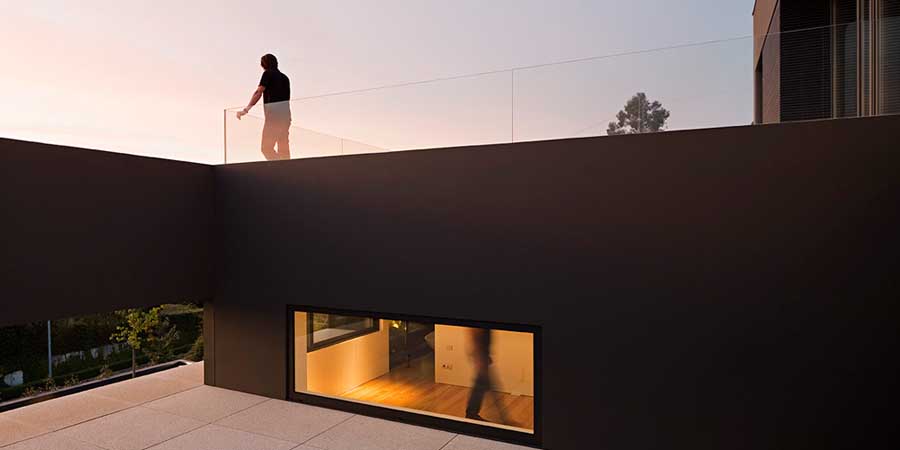Inventive Architecture, Conventional Building, Project, Photo, News, Design, Property, Image
Invention & Convention in Architecture
Architectural Discussion by Dr. Peter Magyar
7 Dec 2010
Architecture Invention & Convention
How the balance of invention (Latin=invenire, inventus) and convention (latin=convenire, conventus) can strengthen and redeem us, architects of all nations?
In a bit of circuitous way, I promise to answer this self-imposed question at the end. Let me share one of my observations, which helped me to approach that goal. Without a doubt, my years in Africa opened my eyes to the role and importance of the continuity of surfaces: from the ground, up on the walls, in to the interior and up to the roof of those beautifully simple and ageless buildings, where the materials of the elements mentioned were all the same.
In case of Northeast Nigeria, it was red laterite. Since these hand made surfaces denoted the ‘edge of infinity’, as well as the extremity of the Earth, it was easy to view them and coin them, as “spaceprints”, knots in the universal, cosmic space, as it fluidly fills the inside of human dwellings, creating the “here” in that vastness.
Coinciding with studying these built forms, the area of non-Euclidian geometry offered the intriguing possibility to analyze three dimensional volumes in their two dimensional reductions, which then were able to be transformed to their respective, topologically equivalent formations. I beg the reader’s forgiveness for this indulgence into personal experiences, but this is the point, where, as promised, I can return to the issue of convention.
The definition of the word in the New Britannica Webster Dictionary reads as follows: generally accepted custom, practice or belief; also: something accepted by convention as true, useful, or convenient. Like the pentatonic music, which structure is “conventional” in the folks-music of several, geographically distant peoples. Some music etymologists believe however, that this “convention” has physiological roots in our audio-receptive system, how we process sound in our mind.
An interesting parallel occurred, when I became familiar with the work of the late Swiss psychologist and philosopher, Jean Piaget. In his book: “The Child’s Perception of Space”, based on large number of empirical and clinical studies, he defines topology, as an ordering principle in our psyche. Similar physiological root appears again, as mentioned in connection with the pentatonic music.
And here comes my –as yet unsubstantiated – assumption regarding our magic word, convention. Making some of the aforementioned reductions of three-dimensional (architectural) forms to two-dimensional surface diagrams, “spaceprints”, and then to their topological equivalents, it is no question, that the large, continuous surfaces offer themselves much easily to this process. Meaning, that we accept them more “conveniently”, hence the undeniably overwhelming mass-acceptance of traditional building forms, even in spite of they usually uninventive, mostly repetitive appearances. The reason of it is, that our topologically inspired mind processes them more easily.
Now I arrived to the station, like the great composer Franz Liszt at his continental sojourns, when – in his case – he had to improvise, and ad lib compose music to given themes of other composers. I have of course several huge handicaps in this comparison. First, Liszt was a genius of a singular stature. He also had the score of the music to be paraphrased.
None of these are valid in my case, so with the greatest respect to the authors – composers – of the featured works, I only made an admittedly subjective division between the convention–oriented, and the invention-oriented groups.
The first group, convention–oriented, is populated with the Guimarães House, Portugal; the RSA Academy Tipton, UK; The Gibson Hotel Dublin, Ireland; the Caetano & Assis House, Portugal; and the Kenmare house, Ireland.
Guimarães House, Portugal:
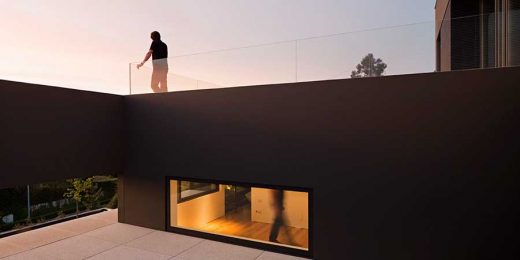
photograph : Nelson Garrido
RSA Academy Tipton, England:
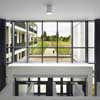
photo : Hufton + Crow
The invention-oriented group is represented by the Haj House Complex, India; the Haramain High-speed Railway Stations, Saudi Arabia; and the GMS Grande Palladium Mumbai, India.
Haj House Complex
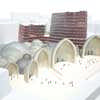
picture from architect
Haramain High-speed Railway Stations
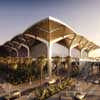
image : Foster & Partners
GMS Grande Palladium Mumbai
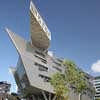
picture from architects
The most obvious distinction between the two groups is, that convention guided works are represented – predictably – by mostly residences, and the inventive, (sometimes strangely so) works, are public buildings.
House in Grândola
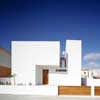
image © DMF, Lisbon (Rights Reserved)
Among the earlier presented Portuguese houses I found one, where that elusive balance seems to be present, the House in Grândola, Portugal, by ARX Portugal, Architects. The simple, but spiritful application of the massing and the consequent relationships of internal and external spaces are quite delightful, and simultaneously contain that rarefied qualities of invention and convention!
Dr. Peter Magyar
Dr. Peter Magyar, USA
The guest editor of this issue of e-Architect is Dr. Peter Magyar, RIBA, an International educator, architect and author. Since 1989 he has been head and director of three Architectural Departments, or School, at the Penn State, Florida Atlantic and Kansas State Universities respectively.
He is interested in the intuitive and cognitive processes of design, archived thousands of drawings in this field, some of them are published in his latest books: “Thought Palaces”, 1999 Architectura & Natura Press, and “ThinkInk”, 2010, Kendall Hunt. About a drawn Explanation of “Spaceprints” visit You Tube, and search for: video.
Architectural Design
Architecture Articles by Dr. Peter Magyar.
Architecture Masters : article by Dr. Peter Magyar. 2 Oct 2012
Architect Engineer Artist : article by Dr. Peter Magyar. 20 Mar 2012
Architectural Aura : article by Dr. Peter Magyar. 24 May 2011
Contemporary Architectural Articles
Sustainable Design : article by Trevor Tucker. Sep 2009
Design Narrative : article by Lee Miles. Sep 2010
Planetization Architecture : article by Mphethi Morojele. Aug 2010
Comments / photos for the Invention & Convention in Architecture Article page welcome

